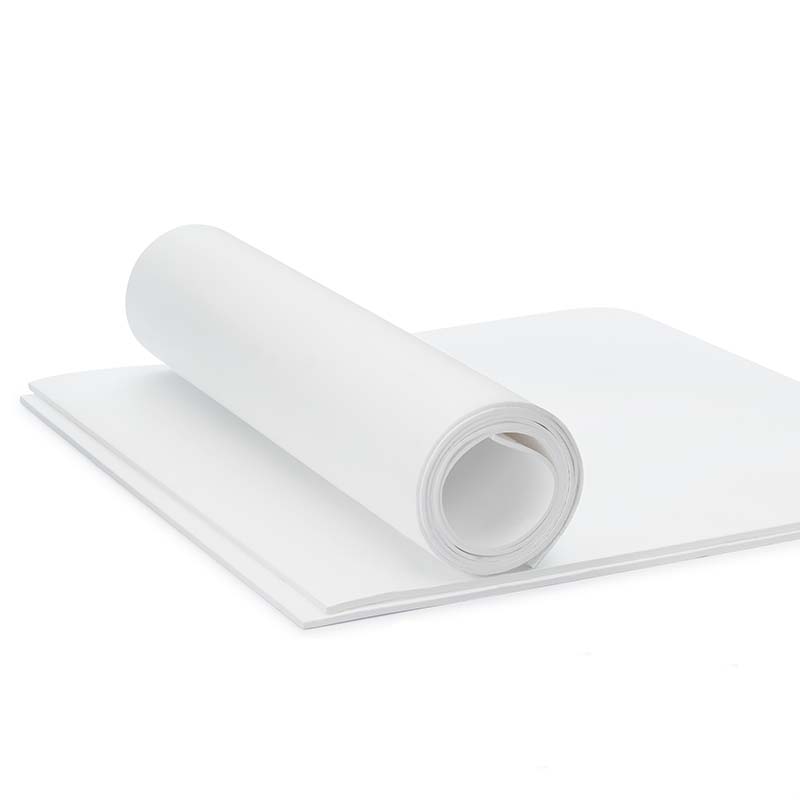Polytetrafluoroethylene (PTFE) is a versatile material that has gained popularity in various industries due to its unique properties. PTFE sheets are widely used in gaskets, seals, and electrical insulation applications. The manufacturing process of PTFE sheets can be either molded or skived, each with its advantages and disadvantages.

Molded PTFE Sheets
Molded PTFE sheets are produced by compressing fine powder of PTFE resin at high pressures and temperatures. This process creates a solid sheet with uniform thickness and density. The molded sheets have a smooth surface finish and excellent mechanical properties. They exhibit low friction characteristics, high chemical resistance, and excellent electrical insulation properties.
One of the significant advantages of molded PTFE sheets is their superior strength. Due to the compression process, the molecules in the resin align themselves in a uniform pattern, resulting in increased tensile strength and improved dimensional stability. This makes them suitable for applications where high mechanical stress is expected.
Another advantage of molded PTFE sheets is their high purity level. During molding, any impurities present in the raw material are eliminated through filtration techniques. This ensures that the final product is free from contaminants affecting its performance.
However, there are certain limitations associated with molded PTFE sheets as well. One limitation is their limited size availability compared to skived sheets. Due to manufacturing constraints, it can be challenging to produce large-sized molded sheets without compromising quality.
Skived PTFE Sheets
Skived PTFE sheets are produced by slicing or cutting thin layers from larger blocks of compressed resin using specialized skiving machines. This results in thinner but wider sheets compared to molded ones.
One significant advantage of skived PTFE sheets is their flexibility and conformability properties.
Skiving allows precise control over sheet thickness variations across different sections or areas. This flexibility in thickness enables engineers and designers to tailor the sheet according to specific requirements, making it ideal for intricate applications where a customized fit is necessary.
Moreover, skived PTFE sheets have excellent surface smoothness and uniformity, which can be attributed to the slicing process. The smooth surface minimizes friction, making them useful in applications requiring a low coefficient of friction, such as bearings or sliding surfaces.
However, skived sheets do have some limitations as well. One limitation is their reduced tensile strength compared to molded sheets. The cutting process disrupts the molecular alignment of the resin, resulting in weaker mechanical properties overall. Thus, they may not be suitable for applications with high mechanical stress or load-bearing requirements.
Another limitation of skived PTFE sheets is their potential for surface imperfections due to the slicing process. Although efforts are made to ensure a smooth finish during manufacturing, certain defects like micro-tears or uneven edges may occur. These imperfections can affect the performance and integrity of the sheet in specific applications.
Choosing between Molded and Skived PTFE Sheets
Several factors need consideration depending on the application requirements when selecting between molded and skived PTFE sheets. Molded sheets are preferred due to their superior strength properties for applications demanding high tensile strength and dimensional stability under mechanical stress or load-bearing situations.
On the other hand, applications that require precise thickness control or customized fitting benefit from skived sheets due to their flexibility and conformability properties.
The choice may also depend on size availability, as larger molded sheets may not always be feasible for specific applications.
In conclusion, molded and skived PTFE sheets offer unique advantages depending on specific application needs. Molded sheets provide superior strength while maintaining excellent chemical resistance, electrical insulation capabilities, and a smooth finish.
Skived sheets offer flexibility, precise thickness control, and conformability for intricate applications. It is crucial to carefully evaluate the requirements of the intended application to decide which type of PTFE sheet is most suitable.
